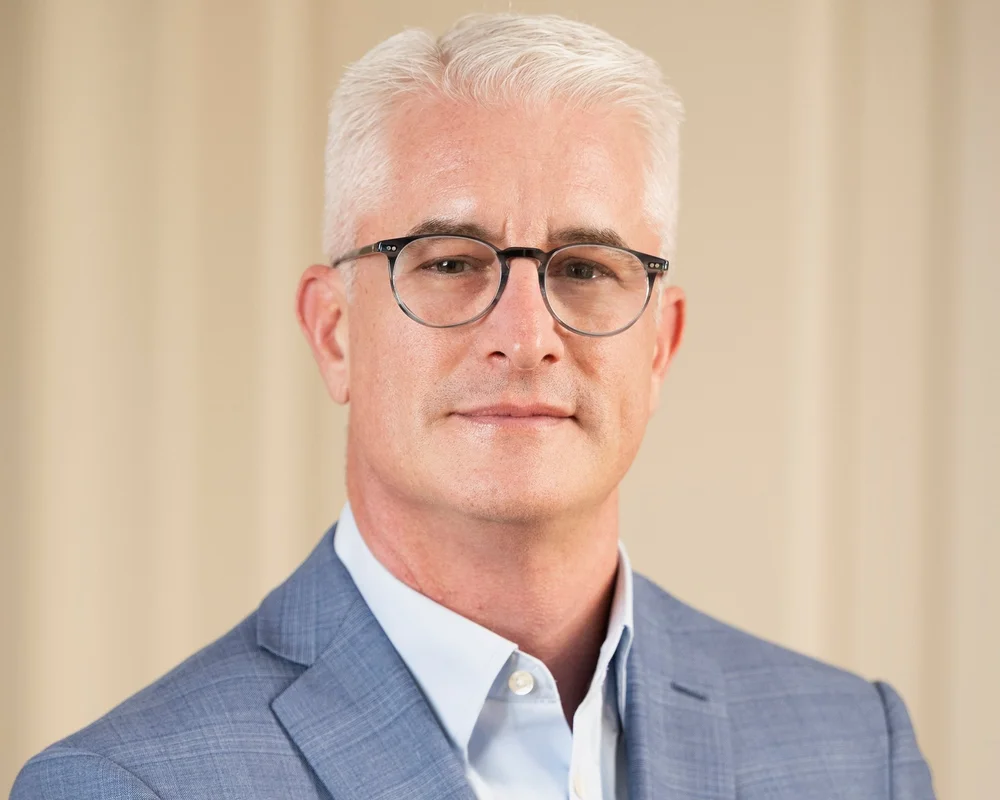 The hardest places to get fiber have always been the less populated areas of the country out in the Rocky Mountains and the High Plains. Most providers shy away from such markets, but there are a few that specialize in taking on the harder projects. Mammoth Networks, a wholesale subsidiary of Wyoming regional fiber builder Visionary Communications, has spent the last decade doing precisely that. With us today to talk about Mammoth’s approach to hooking up the markets of the Mountain West as well as other topics like the role of municipal fiber is CEO Brian Worthen.
The hardest places to get fiber have always been the less populated areas of the country out in the Rocky Mountains and the High Plains. Most providers shy away from such markets, but there are a few that specialize in taking on the harder projects. Mammoth Networks, a wholesale subsidiary of Wyoming regional fiber builder Visionary Communications, has spent the last decade doing precisely that. With us today to talk about Mammoth’s approach to hooking up the markets of the Mountain West as well as other topics like the role of municipal fiber is CEO Brian Worthen.
TR: How did Mammoth Networks get started? Where do you fit in the infrastructure ecosystem?
BW: We started out as a DSL and T1 shop actually. We thought we’d help out the mom & pop ISPs, and then started seeing more and more interest from the regional and national providers that wanted to use our layer 2 network. Over time, we developed relationships with all sorts of rural providers in these western markets where there’s not a lot of density or competition or much of anything really. For someone to get an interface with CenturyLink in both LATAs of Montana or in Wyoming and Utah, it’s a pretty significant investment. Everyone in this industry wants to create one type of order and recreate it 10,000 times. They are focused on automation and on generating hundreds of quotes a week. We’re here waiting for the fallout, the orders that don’t have a solution. There may be better business models by some measure, but we’re heavy on engineering and light on sales and it’s a good fit for us. People know it’s what we do.
TR: How did you build out your regional network?
BW: Mammoth leases circuits from just over 40 providers. Many of them are independent telcos or regional cable MSOs which add a variety of interfaces that add reach and coverage in the Rocky Mountain region. We buy a circuit, take it into a hub, and make it layer 2 so it can talk to any other circuit regardless of the underlying provider. Typically we’d use the first circuit sold into a market to justify the build, and everything after that made it easier to wholesale. It is a risk building it without any margin, but by the time you get the third or fourth customer you’re doing pretty well with it.
TR: Is there much alternative fiber is there in the mountain west? How do you establish those relationships?
BW: The availability of fiber in this region is pretty slim. But there are hidden pockets and isolated assets operated by regionals, locals, or cable companies. The smaller the entity, the less likely they are to have their fiber in some sort of national database or have the internal resources to get the word out. Because of our reputation as a rural problem-solver, we see numerous requests in these hard-to-reach markets. We’ll by a 100Mbps local access circuit, and wholesale it to a larger, national carrier. Then they’ll turn around and ask us one of two things: can we turn it into a two way NNI and buy from you outside our footprint, or can you help us market these services.
TR: Who are your typical customers?
BW: Where we see a lot of activity is with the regional providers, mostly because there are multiple situations where a corporation straddles multiple states or LATA boundaries. A regional fiber network obviously has a limited reach, and they use us to augment their reach in order to maintain their relationship with their customers and not lose them to a national MPLS provider. If there’s 10 locations to serve and 8 of them are in their footprint, they’re pretty happy to see us involved as we will bring a solution in for those last two locations. We also serve national providers, some cable companies for instance. As you know, even the nationwide providers walk into these large multisite opportunities and say “we handle 82 out of 100 locations, aren’t we doing a great job?” But nobody is out there providing a 100% solution.
TR: How has the business market for Ethernet circuits been evolving from your perspective?
BW: The four circuits we see nowadays are 10Mbps, 100Mbps, 1Gbps, and 10Gbps. It’s pretty rare to see something at 50Mbps or 200Mbps anymore. Rather, it tends to be requests for a number of locations at the same speed, regardless of whether it is downtown or metro. That’s what the business markets are asking for now, whereas a few years ago you would see people going in speed increments of 10-20Mbps. Now they just go straight to 100Mbps.
TR: What has Mammoth Networks been working on lately?
BW: We’ve been focusing a lot lately on building 0-2500ft of fiber to reach into a certain asset. That helps us provide the local loop and tie into the middle mile. We arrange a meet point, maybe at a manhole outside a central office or cable head end. We’re trying to find ways to help these networks overlap, and we’ve seen a lot of activity on that front over the last 12-18 months. Everyone’s really an island in rural America. You’ve got a cable company, a phone company, maybe a public utility or regional provider, and they all don’t PoP at same locations. We find a location where they might overlap, and it’s different every time and something not a lot of people are going to do.
Also, we’ve partnered up in the past providing backhaul for cellular carriers, but the wholesale relationship is such that it wasn’t successful because there were too many folks in the middle. We recently brought on some expertise to meet that need via local partnerships and joint builds. We’re looking at building our middle mile experience out to these communities and then building out the last access piece to respond to cellular demand. We hope to respond to cases like orphaned towers that have been on carrier lists for a long time where it’s just impossible to get fiber to.
TR: What trends do you see coming over the next few quarters?
BW: I think we’re going to see a lot more wave growth. Wave circuits are priced lower right now than switched Ethernet, there are fewer points of failure, and it’s easier to support. We’re building out additional rack space and panels in Denver and Seattle right now, which is unusual for us because we usually view the metro areas as more of a hub than a market for us. But we’re very cross-connect heavy, one of the top 3 at the CoreSite facility at 910 15th Street. The more wave circuits we sell, the higher the cross connect needs are.
TR: What was the most challenging project Mammoth has worked on recently?
BW: Probably the project in Steamboat Springs, Colorado we did last year. The Steamboat Springs chamber and several other entities wanted a second route out of town. There are a lot of corporate headquarters in Steamboat. We used our colocation in the CenturyLink central office and our relationship with a regional fiber provider, and came up with a dual route, totally diverse network. We had to build a number of fiber vaults, partner with the community on conduit and interduct availability, and light fiber from Steamboat up to Craig. It had a lot of moving components, but in the end what they got is a central, neutral room in the community that is a fiber hub.
TR: How much help was the federal stimulus in bringing more fiber to rural areas like the ones you serve?
BW: There are just pockets of it. There are some fantastic efforts out there, and I see a lot of rural fiber networks that have grown via the stimulus, but they’re not far reaching. There were some middle mile projects that were very appropriate and successful. But we didn’t see many middle mile builds that resulted in an upheaval of the market. The stimulus provided a few more assets to draw from. But such efforts also train the people who receive the funding to operate within government guidelines and confines. I’m not sure how competitive an environment that can create. It’s tough. I live in an area of the country where any statistics per square mile are a miserable number whether you’re selling TV sets, puppy food, or bandwidth. There’s just not a lot of market.
TR: What do you think the next step is for bringing fiber to these hard-to-reach communities?
BW: What I see is municipal fiber efforts gaining a lot of traction in this region. I’m not saying that’s the right thing to do, but I think the communities are getting sick of their options. I think these municipal efforts are going to be the biggest factor here over the next 3-5 years simply because they’re willing to invest the money from the community.
TR: As a network operator, how do you feel about municipal fiber projects?
BW: I’m torn to be honest. If the municipal entity, whether it is the city, county or utility, enters with public funds, it makes it even harder for a private company to find critical mass. If someone came into my market and picked off the largest 50% of the clients, I’d have a tough time making it work too. But on the other hand, as a wholesale provider that is highly neutral, Mammoth can really walk into these municipal efforts and say “We can help. We can be that third party that understands the pricing and operation.”
TR: Given the FCC’s recent moves to support municipal fiber, do you foresee significant further opposition from the incumbents and cable operators?
BW: I think they’re always going to be concerned, but there will be so many efforts that are cranking up that they’ll find it hard to keep up with if they try.
TR: There’s been lots of consolidation in the industry over the past decade; do you see Mammoth taking part at some point?
BW: There are a ton of opportunities out there for consolidation. But we like what we do, we like our size, we like our ability to be nimble. The more consolidation you do and the bigger you get changes your business. I want to do right by our customers. If I’ve shaken their hand and given them a promise, I don’t want to forsake them. I’ve set foot in probably 30-35% of our customers’ stores, and not a lot of people do that anymore.
TR: Thank you for talking with Telecom Ramblings!
If you haven't already, please take our Reader Survey! Just 3 questions to help us better understand who is reading Telecom Ramblings so we can serve you better!
Categories: Ethernet · Fiber Networks · Industry Spotlight






Should have taken this opportunity to ask them for a better network map. 😉